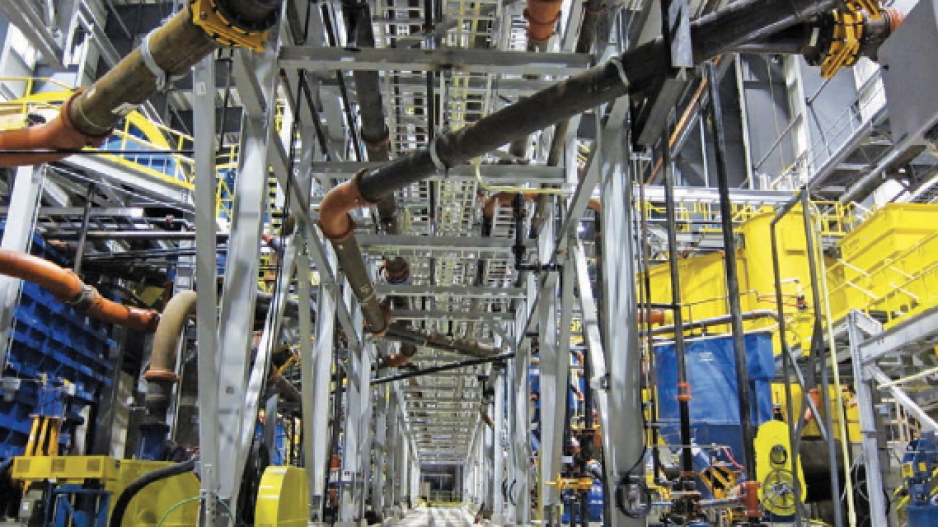For B.C. mining companies, 2014 has been clouded by a dramatic drop in commodity prices as China’s economic growth stalled and market inventory of metals and minerals remained high.
But analysts say the province’s miners appear prepared to weather the downturn.
“[Miners] understand that these cycles in the industry are prone to volatility,” said Bruce Sprague, EY’s Canadian mining and metals leader. “They focus on their assets and costs to identify the core projects from the non-core and increase profit.”
He added that the challenge for junior mining and exploration companies now is managing their cash balance.
“In most instances, it’s hard for them to look to the equity market to otherwise replenish their cash balance. That said, we are seeing situations where they are either creatively joining ventures with major mining companies on a promising project or looking to alternative sources of equity.”
According to PwC’s 2014 junior mine report, the top 100 mining companies on the TSX Venture Exchange raised $685 million through equity financing in the 12-month period that ended June 30 – 14% less than the $795 million in 2013.
Similarly, spending in exploration and development fell to $460 million in 2013 from $680 million in 2012.
But Gavin Dirom, president and CEO of the Association for Mineral Exploration BC, said many of the advanced exploration activities, mostly in northwest B.C., are proceeding because they’re multi-year projects with set budgets and venture capital that was raised earlier.
He said smaller projects were either mothballed or reduced in scope because of persistent challenges in raising venture capital.
“With the low price in coal, metals such as zinc, copper, as well as precious metals, will lead exploration in the next two to three years.”
Vancouver-based Nevsun Resources Ltd. (TSX:NSU), which operates the Bisha mine in Eritrea, has enjoyed rapid growth in profits.
Its net income increased 271% to $126.5 million in 2014 from $34.1 million in 2013.
Nevsun tops BIV’s 2014 list of the fastest-growing companies and is ranked seventh on BIV’s list of top-performing B.C.-based mining stocks (see page 32).
Its share price hit a 2014 high of $4.83 in late November and was trading at $4.43 on December 11.
Another top B.C. mining company, Imperial Metals Corp. (TSX:III), took a hit in 2014 from its Mount Polley mine tailings pond leak, posting a net loss of $28.2 million, compared with its net gain of $32.9 million in 2013.
By October, Imperial’s share price, which was trading at around $18.60 in February, had dropped to just under $8. It has since rebounded slightly in December and was trading at $8.30 on December 11.
Steve Robertson, Imperial’s vice-president of corporate affairs, said mining in B.C. will continue to be a force, operationally and geologically, in 2015.
“[B.C.] is a very safe jurisdiction from a 10-year perspective. The geology is relatively mature, but it still holds tremendous upside to exploration potential.”
The company is finishing construction at its Red Chris mine in northwest B.C. and hopes to start processing rock by early January, said Robertson.
Other major B.C. miners hit by falling prices this year included Teck Resources Ltd. (TSX:TCK.B), which operates B.C.’s top six biggest mines. Teck’s profits are down 68% from $767 million in 2013. From a high of $29.10 in January, the company’s share price had fallen to $13.56 as of December 11.•




